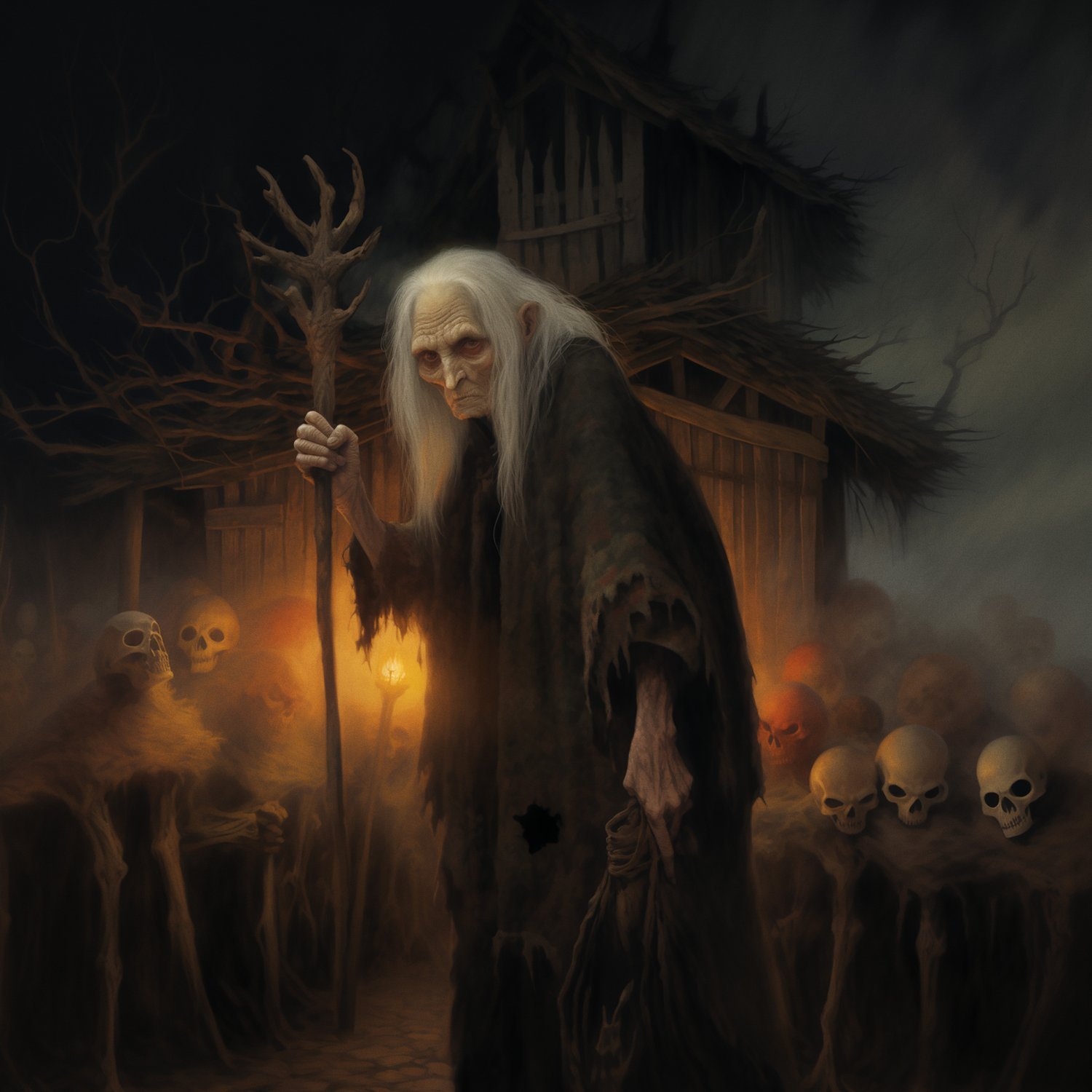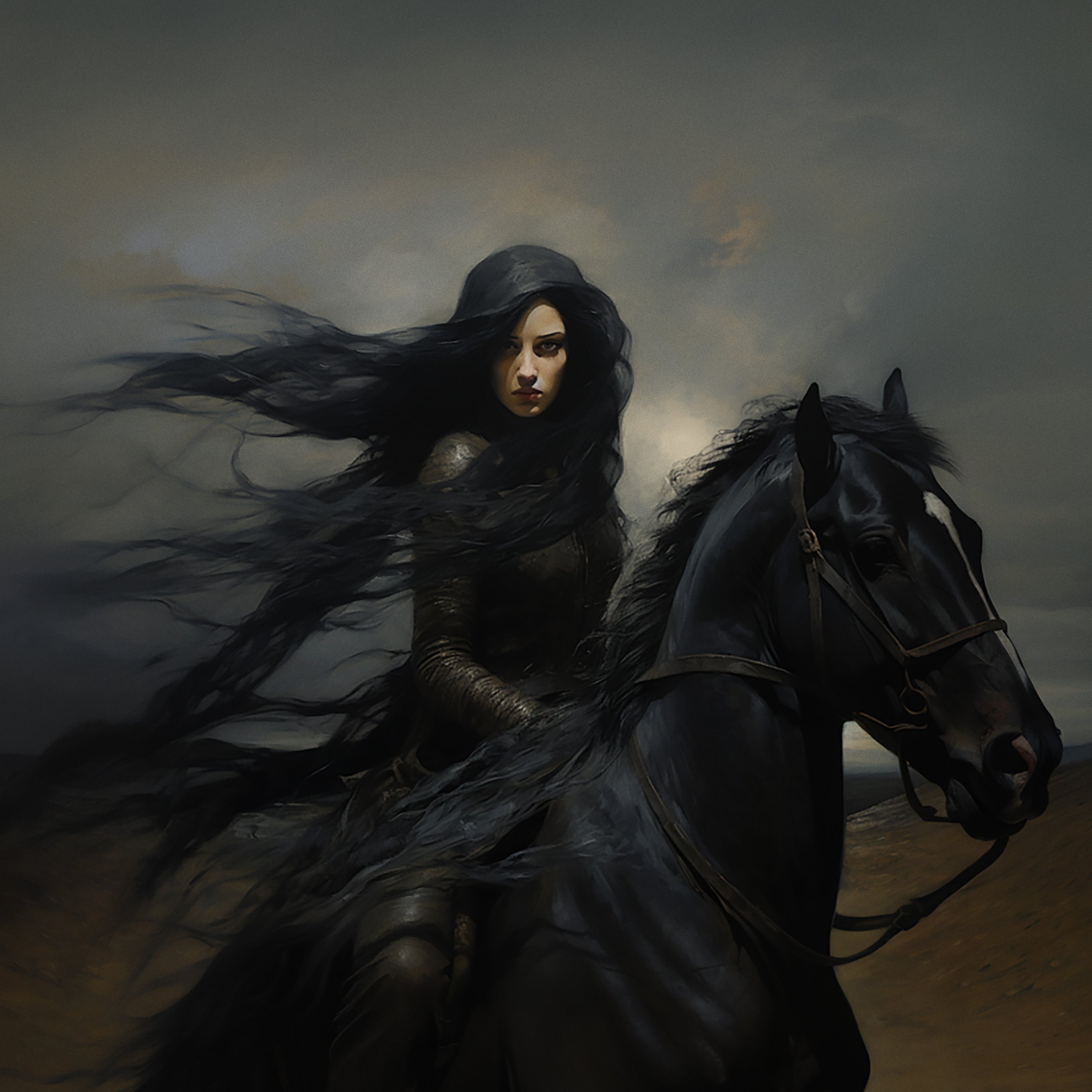Journal
Astrology | Goddesses | Mythology | Spirituality | THOUGHTSHina
Hina, a revered goddess in Polynesian mythology, embodies femininity, creativity, and the natural world. Associated with the moon, sea, and life cycles, she symbolizes fertility and the divine feminine energy of nature. Hina's myths, particularly her descent into the underworld, reflect resilience and spiritual enlightenment. As a patroness of the arts, she inspires creativity, with her presence felt in nature and celebrated through various rituals and festivals across Polynesia.
Vesna
As spring emerges across the northern hemisphere, the Slavic goddess Vesna symbolizes the season's renewal and vitality. Rooted in ancient beliefs, Vesna, often depicted as a youthful maiden adorned with flowers, embodies the cyclical battle between life and death, constantly struggling against Morana, the personification of winter. Celebrations like Maslenitsa and Kupala Night honor Vesna, blending pagan and Christian traditions to mark the arrival of spring with joyous rituals. Vesna's legacy continues to resonate, connecting people with their cultural heritage and the rhythms of nature, reminding us of the enduring promise of renewal and the interconnectedness of all life.
Longmu, Mother of Dragons
Longmu, the original Mother of Dragons, is a revered figure in Chinese mythology. Born as Wen Shi in 290 BC, she nurtured five snakes from a stone egg, which later transformed into powerful dragons. These dragons protected her village, earning her the titles of "Mother of Dragons" and "Divine Human." Her story, celebrated for its themes of maternal love and devotion, continues to inspire reverence today, symbolizing the enduring virtues of strength, protection, and nurturing motherhood. Temples and festivals honor her legacy, reflecting her significance in both ancient and modern Chinese culture.
Skadi
Embark on a mythical journey through the Norse Pantheon with Skadi, the goddess whose essence embodies the harsh beauty of winter and the untamed wilderness of Nordic landscapes. Known for seeking justice for her father Thjazi’s death at the hands of Loki, Skadi’s quest for retribution brings her to Asgard, where she faces a peculiar challenge to select a husband by the sight of their feet, ultimately choosing the sea god Njord. Residing in Thrymheim, a celestial realm of snow-covered peaks, Skadi commands the icy winds and is revered by hunters and those seeking warmth and prosperity in winter’s harshness. Beyond her role as a winter deity, Skadi symbolizes justice, wisdom, and resilience, offering strength and inspiration to those facing adversity.
Selu
Selu, the revered goddess of corn in Native American mythology, is a central figure in the beliefs of several southeastern tribes, including the Cherokee and Creek. Created by the Great Spirit to provide sustenance, Selu is celebrated for her power to ensure a bountiful harvest and her nurturing nature. According to Cherokee mythology, Selu, the first woman and corn goddess, was killed by her sons who feared her magical abilities, but she instructed them to bury her body, transforming her essence into corn seeds to feed future generations. Today, Selu remains a symbol of wisdom, prosperity, and the cyclical nature of life, continuing to inspire spiritual practices and reverence in indigenous communities.
Amaterasu
Amaterasu, the Japanese sun goddess, shines as a central figure in Japanese mythology and Shinto religion. Her name, translating to "shining in heaven," reflects her role as the supreme deity and ruler of Takamagahara, the heavenly realm. Born from the left eye of the primordial deity Izanagi, Amaterasu embodies the sun's brilliance, symbolizing life, growth, and fertility. Revered as the guardian of rice cultivation and purity, her shrine at Ise Grand Shrine stands as one of Japan's most sacred sites. Amaterasu’s legends, including her retreat into a cave due to her brother Susanoo’s misdeeds and her subsequent return to bring light back to the world, underscore her vital role in maintaining harmony and prosperity.
Baba Yaga
Deep within the heart of Eastern European forests lies Baba Yaga, a figure whose eerie mystique has captivated generations. As a prominent example of the Crone archetype in Slavic folklore, Baba Yaga embodies the untamed beauty and inherent danger of the wilderness. Described as an elderly woman with iron teeth and wild, iron-gray hair, she commands fear and respect with her penetrating gaze and metal-clinking voice. Her attire, consisting of tattered rags, and her gnarled staff reflect her deep connection to the forest, while her hut on giant chicken legs adds a surreal, terrifying aspect to her domain, showcasing her role as guardian of the liminal space between life and death.
Mictecacihuatl
Mictecacihuatl, the Lady of the Dead, is a pivotal figure in Aztec mythology, embodying the profound duality of existence. As the goddess of death and the underworld, she and her consort, Mictlantecuhtli, oversee Mictlán, guiding souls on their journey to the afterlife. Her skeletal visage, emblematic of the calavera imagery, is central to Dia de los Muertos, a festival celebrating life and honoring the deceased. Beyond Aztec culture, Mictecacihuatl's symbol of life and death resonates globally, encouraging a deep understanding of transformation and renewal.
Kali
Kali is revered as the cosmic force that upholds the balance of existence, confronting ignorance and ego with fierce determination. Her myth, particularly her battle against the demon Raktabija, highlights her role in ending stagnation and malevolence. Kali’s symbolism extends into modern culture, representing transformation, empowerment, and the radical embrace of one’s true self.
Ereshkigal
Ereshkigal, the ancient Mesopotamian goddess of the underworld, reigns as a formidable guardian of the realm of the dead. Known as the "Lady of the Great Earth" or "Queen of the Great Below," her domain, the Kur, is a shadowy and mysterious place. Her role as an overseer of death and transformation connects her with other underworld deities like Persephone and Hel, highlighting a shared human intrigue with the afterlife. Integral to Mesopotamian cosmology, Ereshkigal also holds a celestial connection as a symbol of Venus, embodying both the mysteries of death and the cycles of rebirth.
Medusa
Medusa, with her snake-covered head and petrifying gaze, is a striking figure in Greek mythology, symbolizing transformation and the power of vengeance. Originally a beautiful priestess of Athena, she was cursed by the goddess after being assaulted by Poseidon, transforming her into a monster with serpents for hair and a gaze that could turn anyone to stone. This transformation, seen by some as both a punishment and a form of self-defense, underscores the often harsh and complex nature of the Greek gods. Medusa's legacy endures as a symbol of empowerment and resilience, resonating through literature and art as a potent figure of transformation and strength.
Cerridwen
Continuing Spooky Season with more Dark Goddesses, this time we're delving into Celtic mythology with Cerridwen. A powerful sorceress and symbol of transformation, Cerridwen is renowned for her cauldron of wisdom, which she intended to bestow upon her son but instead became a vessel of profound alchemical change. Deeply connected to the moon, she represents cycles of renewal and the mysteries of existence. In modern Pagan and Wiccan traditions, Cerridwen's cauldron and lunar affiliation underscore her role as a guide to personal growth and mystical insight.
Oya
Oya, the Yoruba goddess of wind, storms, and transformation, is a formidable deity whose legend spans both physical and metaphorical realms. Commanding the elements of wind and storms, she embodies the tumultuous forces of nature and the transformative power of life's storms. Her narrative includes a dramatic transformation from a river goddess to a tempestuous force, catalyzed by her relationship with Shango, the god of thunder. As a guardian of the underworld and guide for departed souls, Oya symbolizes the profound renewal and cyclical nature of existence, linking life, death, and spiritual transformation.
the Morrigan
Celtic mythology reveals a profound depth through the figure of the Morrigan, the Great Queen or Phantom Queen. As a tripartite deity, she embodies three distinct aspects—Badb, Macha, and Nemain—each representing war, sovereignty, and chaos respectively. Known for her shape-shifting into a crow or raven and her ability to foretell death and battle outcomes, the Morrigan was central to Celtic beliefs about war and sovereignty. Today, she remains a symbol of strength and transformation, celebrated in modern Celtic and Pagan practices for her enduring power and influence.
Hel
Hel, a prominent figure in Norse mythology, embodies the intricate interplay between light and darkness as the guardian of the underworld. Daughter of Loki and Angrboða, her role as keeper of Niflheim underscores the duality of existence, marking a realm for souls who did not die in battle. Depicted as a living corpse or spectral figure, Hel symbolizes the balance between life and death. Her influence endures in modern culture and spiritual practices, representing the transformative journey through darkness and the cyclical nature of life.
Nyx
Nyx, the primordial goddess of night in Greek mythology, is a shadowy and majestic figure born from Chaos. She envelops the world in darkness, embodying the profound and hidden aspects of existence. As a divine mother, Nyx gave birth to significant deities like Eris and Nemesis, who influence cosmic balance and human affairs. Her realm and progeny reflect the complex interplay between light and darkness, and the mysteries of the human soul.
Hecate
As the season shifts to fall, we delve into the enigmatic realm of Hecate, a central figure in Greek mythology known for her profound influence over magic, crossroads, and transitions between life and death. Daughter of Titans Perses and Asteria, Hecate is depicted with three faces representing her dominion over the earthly, maritime, and celestial realms. Revered as a mistress of magic and arcane knowledge, she guided seekers of esoteric wisdom with her torches and protected against malevolent forces. Her lunar association and animal companions, the loyal dog and wise owl, highlight her role as a protector and guide in the mysterious aspects of existence.


















